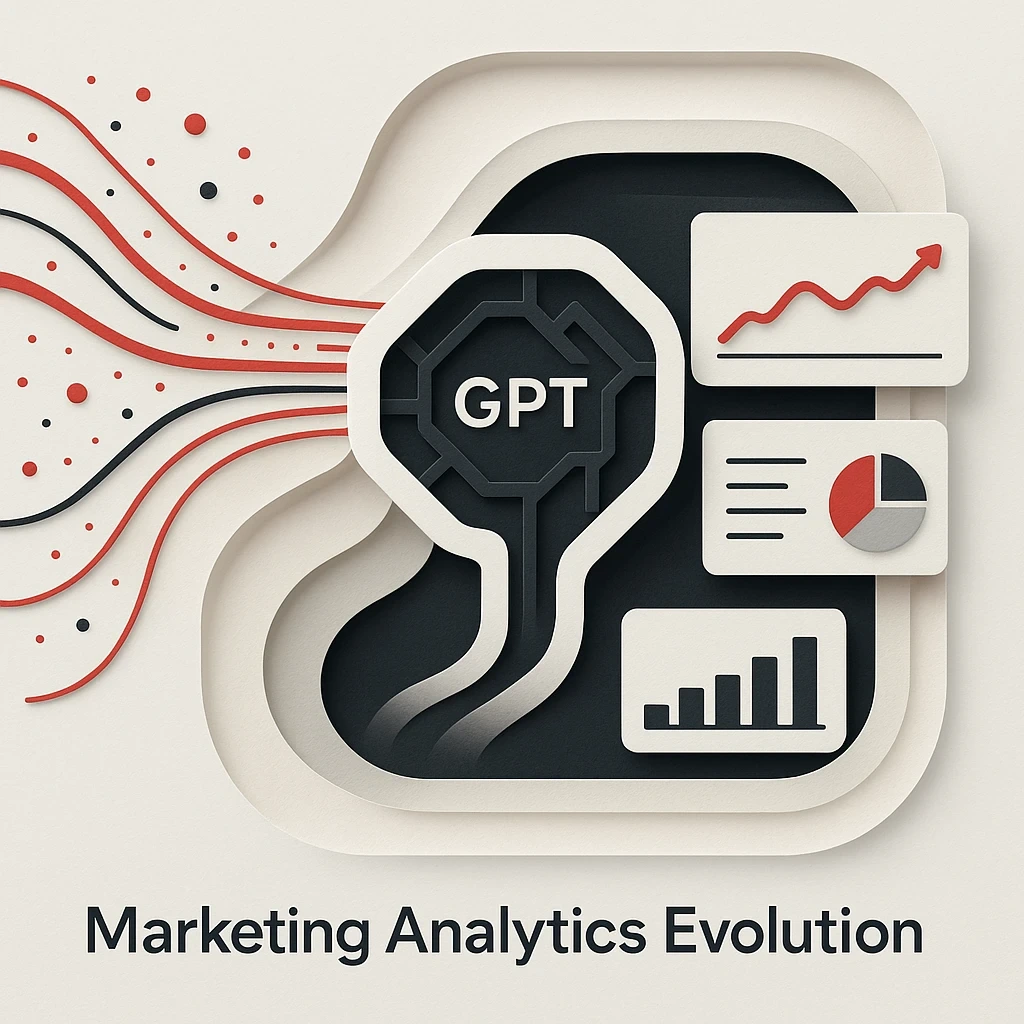GPT Marketing Trends Transforming Digital Advertising
The generative AI revolution has reached a tipping point that’s reshaping every aspect of digital advertising. With the global generative AI in digital marketing market reaching $2.48 billion in 2024 and growing at a staggering 30.83% compound annual growth rate, marketing executives face both unprecedented opportunity and competitive pressure. The question isn’t whether GPT and generative AI will transform your advertising strategy; it’s how quickly you can harness these 117 emerging trends to drive measurable ROI and sustainable growth.
Key Takeaways
- The GPT marketing transformation is occurring at an unprecedented scale, with the generative AI marketing market projected to reach $2.48 billion in 2024 and grow at a 30.83% CAGR, making immediate adoption critical for achieving a competitive advantage.
- Hyper-personalized creative automation delivers the highest ROI by using GPT to generate multiple ad variants matched to specific audience segments, with 43% of firms reporting higher campaign effectiveness compared to traditional A/B testing.
- Predictive media buying reduces wasted ad spend significantly through GPT-powered models that analyze thousands of variables to optimize bids before auctions occur, rather than reacting to yesterday’s performance data.
- ChatGPT has already influenced $156 billion in advertising spend by transforming the buyer journey through conversational commerce integration that bridges awareness and conversion more effectively than traditional landing pages.
- Success requires a 70-20-10 budget allocation strategy, with 70% invested in proven GPT applications, such as content generation, 20% in emerging trends like conversational commerce, and 10% in experimental competitive advantages.
TABLE OF CONTENTS:
Market Momentum Behind GPT Advertising Transformation
The numbers tell a compelling story of rapid adoption and market transformation. The explosive 30.83% CAGR growth from 2019 to 2024 signals that marketers who delay GPT integration risk falling behind competitors who are already seeing measurable performance improvements. This isn’t just about efficiency gains; it’s about fundamental competitive advantage in campaign performance, audience targeting, and creative optimization.
Even more striking is the scale of content creation transformation. The global generative AI content creation market reached $14.84 billion in 2024, highlighting how GPT technology has become the backbone of modern advertising content pipelines. This massive investment underscores a foundational shift in ad production economics, where AI-generated creative assets are no longer experimental.
| Market Segment | 2024 Value | Growth Rate | Key Impact Area |
|---|---|---|---|
| Generative AI Marketing | $2.48 billion | 30.83% CAGR | Campaign automation & targeting |
| AI Content Creation | $14.84 billion | 25%+ CAGR | Creative production & personalization |
| ChatGPT Influenced Spend | $156 billion | N/A | Buyer journey transformation |
Five Transformative GPT Marketing Trends Driving ROI
The 117 GPT marketing trends transforming digital advertising can be distilled into five core categories that are delivering the most significant impact for growth-focused marketing executives. They’re proven strategies already generating measurable results for mid-market and enterprise brands.
Hyper-Personalized Creative Automation
Amazon’s adoption of generative AI to automatically generate multiple ad-creative variants represents the gold standard for personalization at scale. According to Gartner research, 43% of firms experimenting with generative AI report higher campaign effectiveness, with Amazon leading this transformation through data-driven audience segmentation across channels.
The key breakthrough isn’t just generating more creative variants. It’s the intelligent automation that matches specific messaging to audience segments based on behavioral data, purchase history, and engagement patterns. This approach transforms traditional A/B testing into dynamic optimization, continuously improving performance without requiring manual intervention.
Predictive Media Buying and Bid Optimization
The New Zealand University case study illustrates how GPT-powered predictive modeling can significantly reduce wasted ad spend while enhancing overall ROI. After deploying GPT-powered predictive modeling within Adform’s DSP, they automated line-item bidding, forecasted performance in real-time, and personalized creative based on user-behavior signals.
This approach represents a fundamental shift from reactive campaign management to proactive optimization. Instead of adjusting bids based on yesterday’s performance, GPT models analyze patterns across thousands of variables to predict optimal bid strategies before auctions occur. The result is significantly reduced wasted impressions and faster optimization cycles that improve performance over time.
Conversational Commerce Integration
By July 2025, ChatGPT had influenced an estimated $156 billion in advertising and marketing spend, with 7% of advertising customers incorporating ChatGPT into their buying journeys. This massive economic impact demonstrates how conversational AI has become a critical touchpoint in the customer acquisition funnel.
The most successful implementations integrate GPT-powered chatbots not only for customer service, but also as active sales tools that qualify leads, provide personalized product recommendations, and guide prospects through complex purchasing decisions. This creates a seamless bridge between advertising awareness and conversion that traditional landing pages can’t match.
Dynamic Search Optimization
AI-generated search overviews now reach over 1 billion users across 100+ countries, and 60% of US searches result in zero clicks. Modern digital marketing strategies must account for this shift by optimizing for AI-generated features rather than relying solely on traditional organic results.
GPT models excel at creating content that ranks well in AI overviews by structuring information in formats that language models can easily parse and synthesize. This includes using clear headings, structured data, and conversational query optimization that aligns with how people ask questions to AI assistants.
Attribution and Performance Analytics
The complexity of modern customer journeys demands more sophisticated testing methods than traditional last-click tracking. GPT-powered analytics platforms can analyze multi-touch activity across channels, identifying which combinations of touchpoints drive the highest lifetime value customers. This enables more intelligent budgeting and campaign optimization based on actual impact rather than surface-level metrics.
Implementation Strategy for Marketing Executives
The path to successful GPT integration requires a systematic approach that strikes a balance between innovation and risk management. Start with high-impact, low-risk applications, such as automated ad copy generation and A/B testing, and then gradually expand into more complex use cases, like predictive bidding and cross-channel orchestration.
The most critical success factor is data quality and integration. GPT models require clean, structured data to deliver accurate insights and personalization. Invest in data infrastructure before scaling AI applications, ensuring your customer data platform can feed real-time signals to GPT-powered tools for optimal performance.
Your budget should follow a 70-20-10 model: 70% of GPT investment should be allocated to proven applications, such as content generation and basic personalization, 20% to emerging trends like conversational commerce, and 10% to experimental applications that could become competitive advantages. This approach maximizes ROI while maintaining momentum for innovation.
Measuring ROI and Performance Benchmarks
Traditional marketing metrics fall short when evaluating GPT-powered campaigns. Instead of focusing solely on click-through rates and conversion percentages, successful executives track attribution lift, content efficiency ratios, and improvements in customer lifetime value. These metrics better capture the compound benefits of AI-driven personalization and optimization.
Establish baseline performance metrics before implementing GPT tools, then track improvements in campaign efficiency, creative production speed, and audience engagement quality. The most successful implementations show 25-40% improvements in cost per acquisition within 90 days, with ongoing optimization driving additional gains over time.

Consider partnering with agencies that specialize in AI-driven marketing optimization. Get a free consultation to evaluate how GPT integration can accelerate your specific growth objectives and identify the highest-impact implementation opportunities for your industry and customer base.
Future Outlook and Competitive Positioning
The 117 GPT marketing trends transforming digital advertising in 2025 represent just the beginning of a broader transformation. As AI models become more sophisticated and computing costs decrease, expect to see real-time personalization at the individual level, automated campaign strategy development, and predictive customer journey mapping that anticipates needs before customers express them.
The competitive advantage belongs to organizations that build AI-native marketing operations now, rather than changing existing processes. This means investing in teams that understand both marketing strategy and AI capabilities, tools that integrate seamlessly with existing tech stacks, and tracking analytics that capture the full value of AI-driven optimization.
Privacy regulations will continue shaping how GPT models access and use customer data, making first-party data strategies more valuable than ever. Brands that can combine rich first-party data with GPT-powered insights will have sustainable competitive advantages that become stronger over time.
Strategic Action Plan for Immediate Implementation
Begin your GPT marketing transformation with a focused pilot program targeting your highest-value customer segments. Choose one channel where you have strong performance data and implement GPT-powered creative optimization or audience targeting. This provides measurable results quickly while building organizational confidence in AI-driven approaches.
Invest in training your marketing team on AI tools to enhance their capabilities, since the most successful implementations combine advanced technology with skilled human oversight. Your team needs to understand how to effectively prompt AI models, interpret AI-generated insights, and maintain brand consistency across automated campaigns. Comprehensive digital marketing education becomes essential as AI reshapes core marketing skills.
Establish clear success metrics and testing protocols before launching GPT-powered campaigns. Define what constitutes meaningful improvement, establish effective tracking methods, and develop processes for improvements based on performance data. The organizations seeing the strongest ROI from GPT marketing trends are those that approach implementation with scientific rigor and continuous optimization mindsets.
The transformation is already underway, and the window for competitive advantage is narrowing. Marketing executives who act decisively to integrate these 117 GPT marketing trends will define the next era of digital advertising success, while those who wait risk falling permanently behind in an increasingly AI-driven marketplace.
Ready to turn these GPT trends into your competitive advantage before your competitors do?
Related Video
For more insights and lessons about marketing, check out our Marketing School podcast on YouTube.
Frequently Asked Questions
-
What budgeting strategy works best for GPT marketing implementation?
Follow a 70-20-10 model: invest 70% in proven GPT applications, such as content generation and basic personalization, 20% in emerging trends like conversational commerce, and 10% in experimental applications to gain a competitive advantage. This approach maximizes ROI while maintaining momentum for innovation.
-
How should I measure ROI from GPT-powered marketing campaigns?
Track attribution lift, content efficiency ratios, and customer lifetime value improvements rather than just click-through rates and conversions. Establish baseline metrics before implementation, then monitor campaign efficiency, creative production speed, and audience engagement quality for a comprehensive performance assessment.
-
What's the best way to start implementing GPT in my marketing strategy?
Begin with a focused pilot program targeting your highest-value customer segments in one channel where you have strong performance data. Start with high-impact, low-risk applications, such as automated ad copy generation and A/B testing, before expanding to more complex use cases, like predictive bidding.
-
How does hyper-personalized creative automation actually work?
GPT generates multiple ad creative variants automatically matched to specific audience segments based on behavioral data, purchase history, and engagement patterns. This transforms traditional A/B testing into dynamic optimization that continuously improves performance without manual intervention, with 43% of firms reporting higher campaign effectiveness.
-
What makes predictive media buying different from traditional campaign management?
Instead of adjusting bids based on yesterday’s performance, GPT models analyze patterns across thousands of variables to predict optimal bid strategies before auctions occur. This proactive approach significantly reduces wasted impressions and enables faster optimization cycles, which enhances performance over time.
-
What data requirements are essential for successful GPT marketing implementation?
GPT models require clean, structured data to deliver accurate insights and personalization. Invest in data infrastructure before scaling AI applications, ensuring your customer data platform can feed real-time signals to GPT-powered tools for optimal performance.
-
How important is team training for GPT marketing success?
Team training is critical as the most successful implementations combine advanced technology with skilled human oversight. Your marketing team needs to understand how to effectively prompt AI models, interpret AI-generated insights, and maintain brand consistency across automated campaigns.




